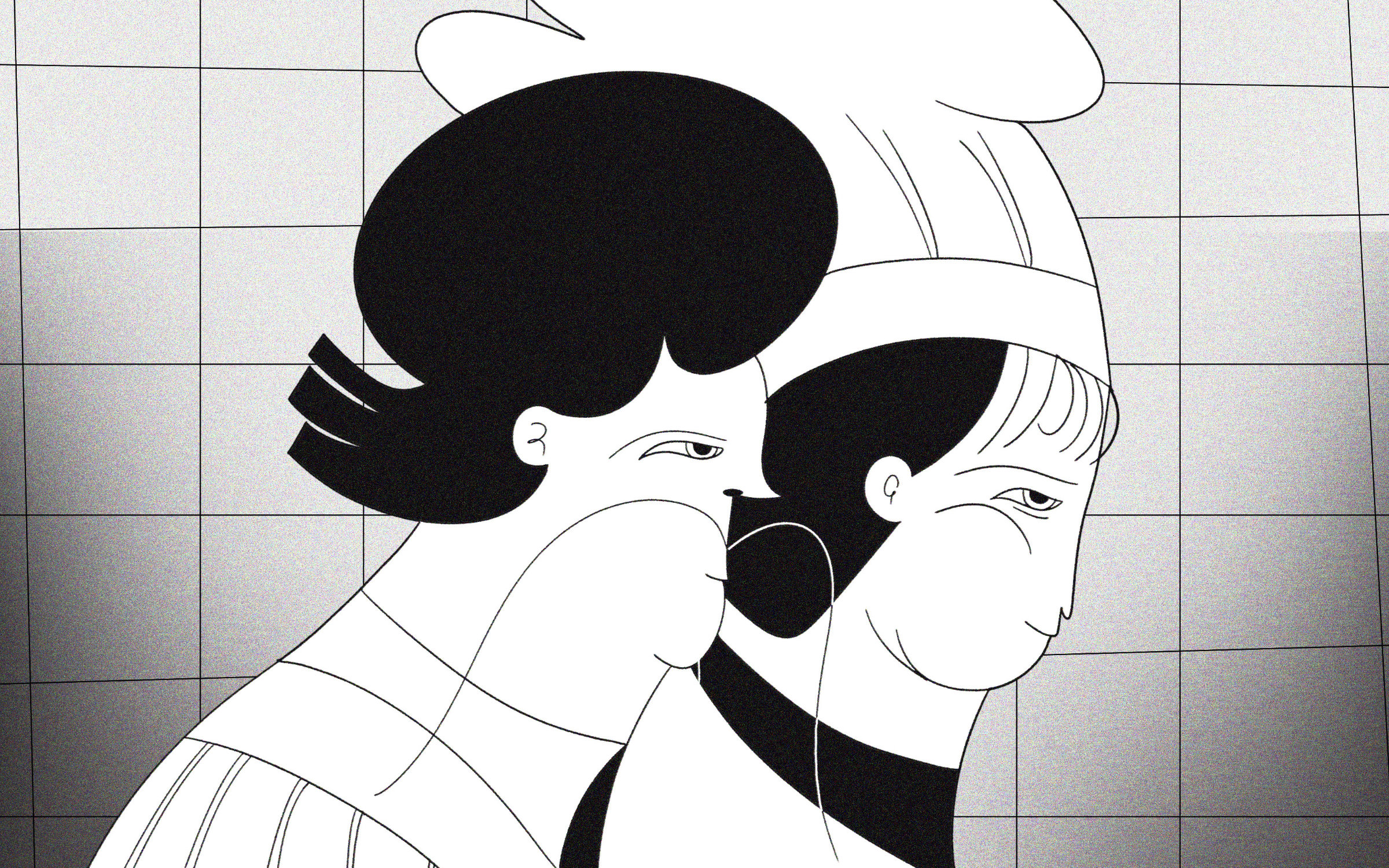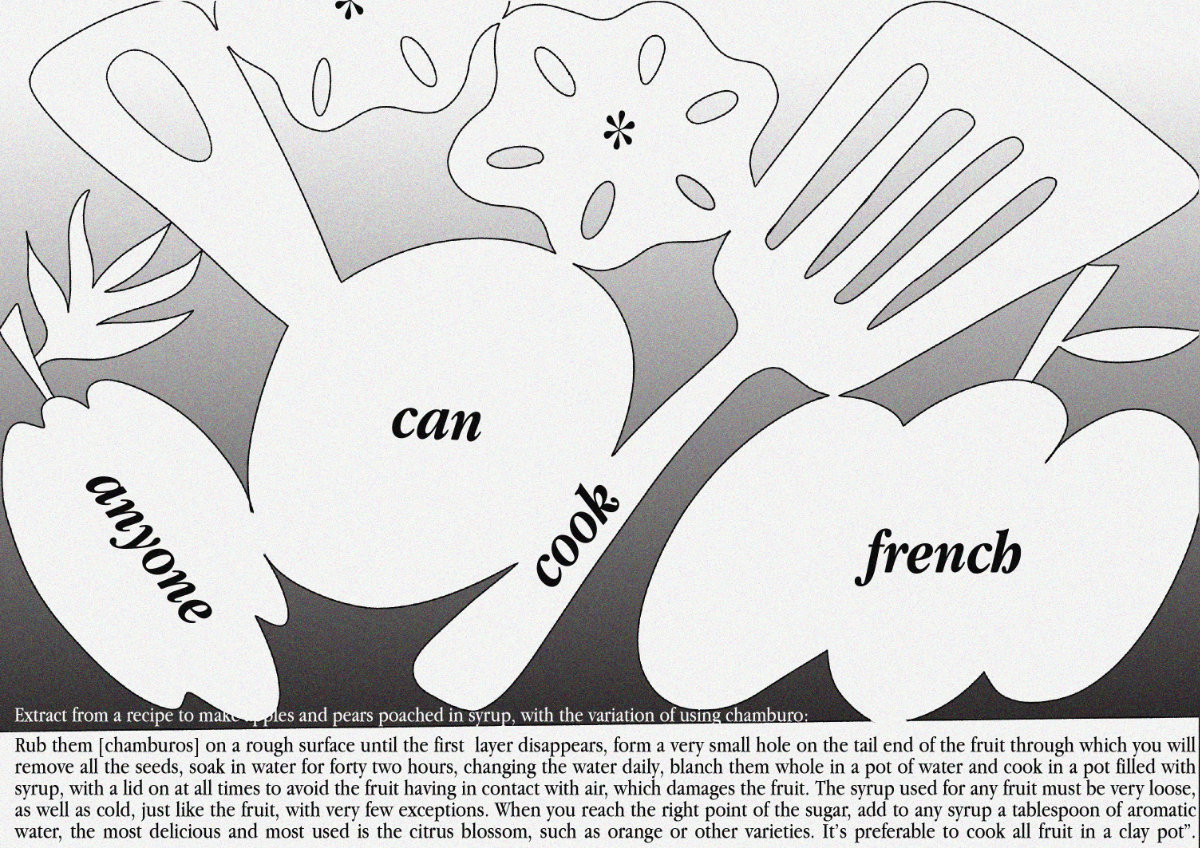The New Gastronome
Mastering the Art of Ecuadorian Cooking
A Story on Cookbooks, Food Culture, and French Cuisine
by Abril Sofia MacÍas Avila
by Abril Sofia MacÍas Avila

The history of cookbooks is a rich and ancient one. Some of the oldest gastronomic documents in the world are recipes written on clay tablets or the walls of Egyptian tombs, dating back to 1900-1400 BC. However, the oldest cookbook per se is De Re Coquinaria, written by Apicius during the Roman Empire. Since then, thousands of different cookbooks have been created and profoundly impacted cultures around the world.
Cookbooks, as pieces of literature, are intriguing objects that can be passive or active. They can be collectible items that people have to hold or look at, to read, to take inspiration from, to be entertained by or to actually use and follow. But what makes a cookbook popular and/or relevant throughout time? What makes it impact a society’s culinary landscape? To try to answer this, I decided to look into two cookbooks that share interesting qualities: Manual de la cocinera, from 19th-century Ecuador, and Mastering the Art of French Cooking, from 1960s America. Both are intrinsically involved with French cuisine, but come from very different times and spaces.
A. D V. E. R. T. I. S. I. N. G
It is fair to say that A LOT of books have been written about French food and, really, that is no surprise. After all, it is one of the world’s most studied cuisines. It’s also one of the most influential in terms of how it has impacted the gastronomy of other territories throughout time. While France’s Michelin-starred restaurants, five mother sauces, Escoffier, Bocuse and Passard are great, French food also gets really interesting when it spills out of its borders and blends with other cultures. This is just the case when we talk about Manual de la cocinera and Mastering the Art of French Cooking. The latter is the work of Julia Child, Simone Beck and Louisette Bertholle; it was created as an attempt (a rather successful one) to introduce French gastronomy to United States’ home cooks. Julia Child, as an American herself, managed to facilitate the concept of traditional French gastronomy to this demographic and many more in the 60s, when home cooks were all about convenience and thought of French food as intimidating. Instead, she wanted to prioritize producing pleasurable, elevated food that was still accessible for a home cook, using American ingredients. The book became a bestseller and went on to be a “staple” in every kitchen and a must-have for professional chefs, especially in the U.S.

Mastering the Art of French Cooking is fairly well known, whereas our second book has a more complex backstory. During the 1850s, the Ecuadorian capital of Quito had one of its first encounters with French culture through Manual de la cocinera (The Cook’s Manual in English). Although, that is just the short title. The whole name you’ll find on the cover is as follows:
Manual de la cocinera,
repostero, pastelero, confitero y botillero
Con el método para trinchar y servir toda clase de viandas, y la cortesanía y urbanidad que se debe observar en la mesa
Obra escrita con vista del manual francés y la práctica de este país
Cook’s manual,
baker, pastry chef, confectioner, drink and liquor maker
With the method to carve and serve all kinds of food and the courtesy and urbanity that must be observed at the table
Work influenced by the French manual and the practices of this country
A bit of a mouthful. The book was written by Juan Pablo Sanz, a true Renaissance man. He was inspired by French customs of the time and by the work of the gastronome Grimod de La Reynière, who wrote some of the first restaurant guides in France at the beginning of the 1800s. Manual de la cocinera was one of the first printed documents of Quitenian cuisine, where the author melded local customs with French ones and vice versa, through a series of abundant recipes (more than 600) and food service tips.
Before this book, Ecuadorians knew very little about France and didn’t show culinary influences from this country. Prior to their independence from Spain in 1822, the predominant cultures seen in food were Spanish and Ecuadorian-Indigenous. Most books coming from France weren’t even available because, at the time, the Kings of Spain feared suffering the same fate that the French monarchy faced during the French Revolution (which ended in 1799). To prevent any influence on the Spanish colonies and to discourage independentist thoughts, the Spanish monarchy created political blockades against all documents and products from France. But this would change soon enough. Eventually, dictionaries, political treatises, etiquette and cooking manuals started to arrive. Juan Pablo Sanz studied these books and saw two things: the lack of an official publication that gathered local recipes from the time and the necessity of structuring and refining them with the help of the French culinary system, as well as introducing French recipes to the palate of cooks. So he went on to write his very own book that would significantly impact the country’s gastronomic culture.
In Manual de la cocinera, originally written in French, Sanz achieves a culinary mix of Ecuadorian recipes, especially from the Andes region, with French influences and techniques, in addition to traditional French recipes (some of them using local ingredients and others with traditional European ones). Inside the book, dishes of all kinds can be found, with a particularly wide range of baking, pastry, confectionery and ice cream recipes. Its beauty is found in its diversity. For example, you can come across a classic Ecuadorian Easter soup made with legumes and cod called Fanesca as well as French Onion Soup; guava pâte de fruit as well as puff pastry and different types of custard.
The following is an excerpt from a recipe to make apples and pears poached in syrup, with the variation of using chamburo, a native fruit from the family of papaya, called “mountain papayas,” which resemble lychee-like taste and consistency:
“Rub them [chamburos] on a rough surface until the first subtle layer disappears, form a very small hole on the tail end of the fruit through which you will remove all the seeds, soak in water for forty-two hours, changing the water daily, blanch them whole in a pot of water and cook in a pot filled with syrup, with a lid on at all times to avoid the fruit having contact with air, which damages the fruit. The syrup used for any fruit must be very loose, as well as cold, just like the fruit, with very few exceptions. When you reach the right point of the sugar, add to any syrup a tablespoon of aromatic water, the most delicious and most used is the citrus blossom, such as orange or other varieties. It’s preferable to cook all fruit in a clay pot”.
A. D V. E. R. T. I. S. I. N. G
While Mastering the Art of French Cooking displays predominantly French recipes, it shares many qualities with Manual de la cocinera, such as its motivation, philosophy and potential to change the food cultures of their social environments. Julia Child’s book promoted the idea that anyone can cook French food with the right instructions and accessible ingredients, and that good, delicious, fresh food should be available for “servantless” home cooks in an era that was ruled by frozen meals, canned goods, things encased in gelatin and marshmallow fluff. Manual de la cocinera had similar purposes, in offering a single original publication that could help home cooks from any level and origin to demystify French and Ecuadorian recipes that so far hadn’t been easily accessible to cooks, standardized and clearly explained in a single document. Both books also saw French technique as a guide for all cooking in general; the system in which the French had organized and studied their cuisine was something to look up to and use to transform what cooking and eating really meant.
Both in the USA and Ecuador, the respective books caught on mostly in the middle to upper classes, mainly with cooks lacking these skills or wanting to expand their knowledge. These were not trends that went by unnoticed, quite the opposite. In Ecuador, Manual de la cocinera impacted the cooking style of the following century in terms of what was considered local food. Pre-existing local recipes were adjusted with new techniques and ingredients of European influence, and certain French recipes began to be conceived as part of Ecuadorian culture, adding to a cuisine that was already quite diverse. During the 20th century, typical dishes continued to be born and evolve, and the popularity of the book decreased until it almost disappeared, along with some recipes from the book that stopped being made. However, a lot of its heritage is palpable in Ecuadorian Andean food; it deeply affected the ontology of this culinary tradition.
On the other hand, Mastering was the seed for several generations of cooks who began seeing food in a new dimension: as something fun, adventurous and intellectually demanding but achievable. It definitely put a stop to processed foods with eccentric plating as the main culinary trend of the country. People started using French techniques as the basics for cooking, which allowed them to expand beyond French recipes. Without this, the culinary landscape of the U.S. nowadays would be another.
If anything, the books discussed are two pieces of literature that show the relevance of cookbooks throughout time as objects that have an impact from the intimate space of our homes to representations of identity. They were books that spoke to a clear, direct public, not only with instructions but with a philosophy, a way of thinking and a message. They managed to impact food and culture at large because they went against the current and proposed something new in their own communities, seeing further ahead than what was available. Many other successful cookbooks share this in common with Manual de la cocinera and Mastering the Art of French Cooking. However, this is usually seen decades after the books are in circulation, when we go back and review how they affected culinary culture (or not). Can we even fathom which cookbooks of this generation will impact culinary cultures around the world? We shall wait and see.
Pazos, J. (1 de Noviembre de 2018). Influencia francesa en la cocina ecuatoriana. (A. Macías, Interviewer) Quito, Pichincha, Ecuador: Chiú.
J. (2005). La Cocina del Ecuador (3ra ed.). Quito, Pichincha, Ecuador: El Tábano.
J. (1882). Manual de la cocinera, repostero, pastelero, confitero y botillero con el método para trinchar y servir toda clase de viandas, y la cortesanía y urbanidad que se debe observar en la mesa. Obra escrita con vista del manual francés y la práctica de este país. Quito, Pichincha, Ecuador: FONSAL.
Child, J. (1961). Mastering the Art of French Cooking. (R. House, Ed.) United States: Alfred A. Knopf, Inc.
Illustrations by ©Maria Julia Mancheno
The opinions expressed in the articles of this magazine do not necessarily represent the views of
The New Gastronome and The University of Gastronomic Sciences of Pollenzo.